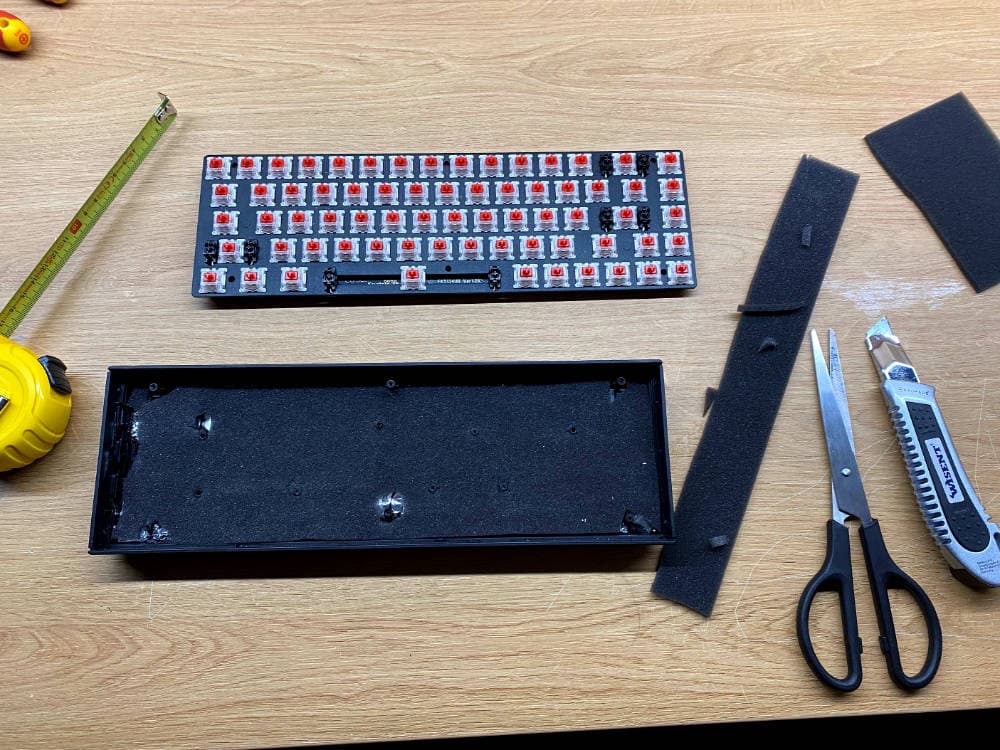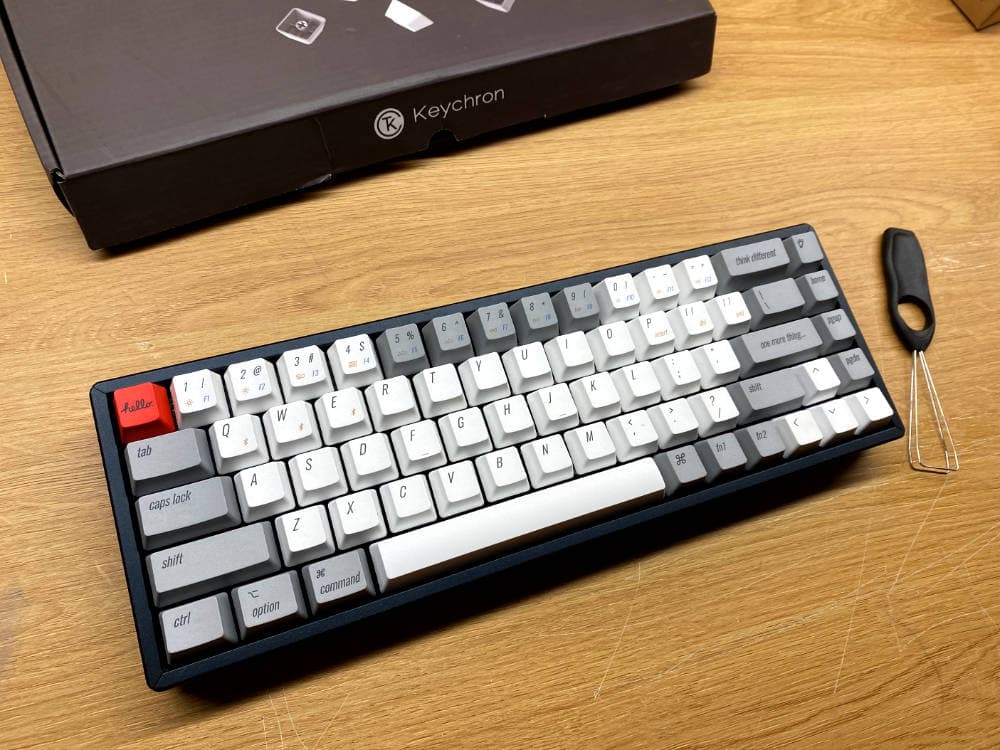The K6 is known for its robust build and tactile feedback, but this strength comes with a caveat — a springy noise. It’s like having a mini-concert with each word typed, not the most desirable feature, especially during intense coding sessions or late-night work.

The Materials
- Car Sound Deadening Mat: Previously, I had used this to silence a noisy metal sink in our old flat. It’s amazing how versatile this material can be, and I had plenty left over.
- Foam from the Keyboard Box: Instead of purchasing new foam, I decided to repurpose the foam that came with the keyboard’s packaging. It’s all about being resourceful and environmentally conscious!
The Process
The first step was to carefully disassemble the K6. It felt like a delicate surgery, each component laid out with precision.
A recent incident with another keyboard, the Numphy Air, which ended in a swollen and eventually fiery battery, made me cautious. I decided to remove the battery from the K6 as I use it exclusively in cable mode.

Applying the car sound deadening mat
This material, previously a hero in our kitchen, was now ready to tackle the echoes within the keyboard. Cutting it to fit precisely was a task, but worth every effort.

Adding the foam
Next came the foam layer. It wasn’t the neatest job, but perfection wasn’t the goal—silence was.


The Results
The final touch was the new keycaps, adding a dash of aesthetic pleasure to the mix. It’s not just about how it sounds, but also how it looks and feels.

Conclusion
The end result? A more silent keyboard with a deeper sound profile. The springy noise, although not completely eliminated, was significantly reduced. It’s important to temper expectations—this isn’t a miracle cure, but it’s undoubtedly progress. And, let’s not forget, the new keycaps add a delightful visual appeal to the entire setup.